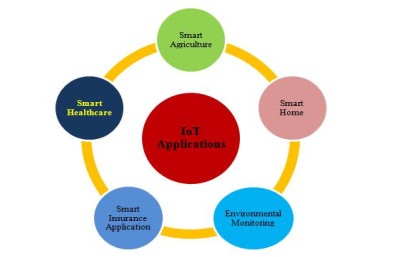Report on the Forum: Bipartisanship and its Impact on Sustainable Development Goals
Event Overview
- Forum Title: Is Bipartisanship Dead?
- Date and Time: Tuesday, October 14, 2025, from 4:00 PM to 6:00 PM.
- Collaborating Institutions: UCLA Luskin in partnership with the Los Angeles World Affairs Council.
- Core Objective: To examine the feasibility of bipartisan cooperation in addressing pressing national and global issues, with a direct correlation to the successful implementation of the United Nations Sustainable Development Goals (SDGs).
Relevance to Sustainable Development Goals (SDGs)
This discussion is critically aligned with the 2030 Agenda for Sustainable Development, particularly SDG 16: Peace, Justice and Strong Institutions, which calls for effective, accountable, and inclusive institutions at all levels. Political polarization directly challenges the stability and effectiveness of these institutions, thereby hindering progress across the entire SDG framework. The forum will explore how overcoming partisan divides is essential for achieving a range of interconnected goals.
- SDG 17 (Partnerships for the Goals): Bipartisanship is a fundamental form of domestic partnership required to mobilize resources and create coherent policies for sustainable development.
- SDG 13 (Climate Action): Addressing the climate crisis necessitates long-term, consistent, and science-based policies that can only be sustained through cross-party consensus.
- SDG 10 (Reduced Inequalities): Legislative action to reduce economic and social disparities requires broad political support to ensure equitable outcomes for all members of society.
- SDG 3 (Good Health and Well-being): Effective public health strategies, infrastructure development, and crisis response depend on unified, rather than politicized, governance.
Distinguished Panelists
The program will feature policymakers and analysts with direct experience in navigating partisan environments to achieve governance objectives. The panel is structured to provide diverse perspectives on strengthening institutions in line with SDG 16.
- The Honorable Jane Harman: Former Congresswoman
- The Honorable David Dreier: Former Congressman
- The Honorable Leon Panetta: Former Secretary of Defense (Invited)
- Mr. Ron Brownstein: CNN Political Analyst (Invited)
Logistical and Registration Details
- Date: Tuesday, October 14, 2025
- Time: 4:00 PM – 6:00 PM
- Admission for UCLA Luskin Affiliates: Current students and faculty are eligible for complimentary admission by contacting events@luskin.ucla.edu.
- General Registration: Interested parties may RSVP through the official registration link.
Analysis of Sustainable Development Goals in the Article
1. Which SDGs are addressed or connected to the issues highlighted in the article?
The article, which describes a discussion on political polarization and bipartisanship, directly connects to the following Sustainable Development Goals:
- SDG 16: Peace, Justice and Strong Institutions: The core theme of the event is the effectiveness and functionality of governing institutions in a time of “historic polarization.” The discussion about whether “common ground can still be found” and the challenges of “governing across party lines” is central to building effective and accountable institutions.
- SDG 17: Partnerships for the Goals: The concept of bipartisanship is fundamentally about partnership. The article’s focus on bringing together “leading voices from both sides of the aisle” to discuss cooperation within the government directly relates to fostering partnerships to achieve common objectives.
2. What specific targets under those SDGs can be identified based on the article’s content?
Based on the article’s focus on political cooperation and institutional effectiveness, the following specific targets can be identified:
- Under SDG 16 (Peace, Justice and Strong Institutions):
- Target 16.6: Develop effective, accountable and transparent institutions at all levels. The article’s central question about whether bipartisanship is a “relic of the past” directly addresses the effectiveness of political institutions like the U.S. Congress. A lack of bipartisanship due to “historic polarization” can lead to legislative gridlock, undermining the institution’s ability to function effectively and be accountable to the public.
- Target 16.7: Ensure responsive, inclusive, participatory and representative decision-making at all levels. The discussion aims to “examine whether… common ground can still be found on the most pressing issues.” This points to the need for a more inclusive and representative decision-making process that is not paralyzed by partisan division, but instead incorporates perspectives from “both sides of the aisle.”
- Under SDG 17 (Partnerships for the Goals):
- Target 17.14: Enhance policy coherence for sustainable development. “Historic polarization” often leads to policy incoherence, where legislative priorities shift dramatically with changes in political power. The search for “common ground” and bipartisanship is an effort to create more stable, coherent, and durable policies on the “most pressing issues of our day.”
- Target 17.17: Encourage and promote effective public, public-private and civil society partnerships… While this target often refers to broader collaborations, its principle applies directly to the article’s theme. Bipartisanship is a form of public-public partnership within a government. The discussion featuring “experienced policymakers” on “governing across party lines” is an exploration of how to make this fundamental partnership effective.
3. Are there any indicators mentioned or implied in the article that can be used to measure progress towards the identified targets?
The article does not mention explicit, quantitative indicators. However, it implies several qualitative indicators that could be used to measure progress:
- Level of Bipartisanship: The central theme of the event, “Is Bipartisanship Dead?”, implies that the frequency and success of cross-party collaboration in legislative bodies is a key indicator of institutional health (Targets 16.6, 17.17).
- Degree of Political Polarization: The article’s reference to a “time of historic polarization” suggests that measuring the ideological distance between political parties serves as an inverse indicator of progress. A reduction in polarization would indicate a move towards more inclusive decision-making (Target 16.7).
- Ability to Find Common Ground on Pressing Issues: The article highlights the need to find “common ground on the most pressing issues of our day.” A measurable indicator would be the successful passage of significant legislation with support from “both sides of the aisle” on these issues, reflecting enhanced policy coherence (Target 17.14).
4. Table of SDGs, Targets, and Indicators
| SDGs | Targets | Indicators (Implied from the Article) |
|---|---|---|
| SDG 16: Peace, Justice and Strong Institutions |
16.6: Develop effective, accountable and transparent institutions at all levels.
16.7: Ensure responsive, inclusive, participatory and representative decision-making at all levels. |
– Degree of political polarization. – Level of bipartisanship and ability to govern “across party lines.” |
| SDG 17: Partnerships for the Goals |
17.14: Enhance policy coherence for sustainable development.
17.17: Encourage and promote effective public, public-private and civil society partnerships. |
– Existence of successful cross-party collaboration (public-public partnerships). – Ability to find “common ground” and pass legislation on “the most pressing issues.” |
Source: luskin.ucla.edu







